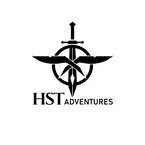The Everest Base Camp Trek via Gokyo Lakes, renowned for its series of majestic vistas of towering mountains, serene lakes, and the famous Cho La Pass, leads trekkers to the base of mighty Everest. Beginning from Lukla, just a 35-minute flight from KTM, the trek passes through Sagarmatha National Park. Following the successful summit of Everest, the region has become one of the prime destinations for trekking and climbing activities. Since the last two decades, EBC is one of the most travelled trekking dentition in Nepal.
This journey offers spectacular vistas from viewpoints like Gokyo Ri and Kala Patthar, along with the opportunity to witness the breathtaking Khumbu Icefall. Trekking to Everest Base Camp through Gokyo Lakes promises a lifetime experience, with enthralling sights of Mt. Cho Oyu, Everest, Lhotse, Makalu, Nuptse, Ama Dablam, Pumori, and more. Spiritually, the region is famous for ancient Monastery called Tengboche . And there is another famous monastery called Pangboche, where the Skull of Yeti is preserved.
During the trek, local tea houses serve as accommodation. The experienced local hoteliers prepare delicious local meals, as well as Indian Continental, Chinese cuisine, and European/American dishes. Our trip package varies with Budget to VVIP, however the three course of meals (breakfast, lunch & dinner) included in the package.
Most trekkers prefer to visit during the Autumn and Spring seasons when the weather and climate are favorable. Proper trekking gears and clothing are essential to ensure a comfortable and meaningful trip. Our experienced and professional trekking guides makes your journey successful.





